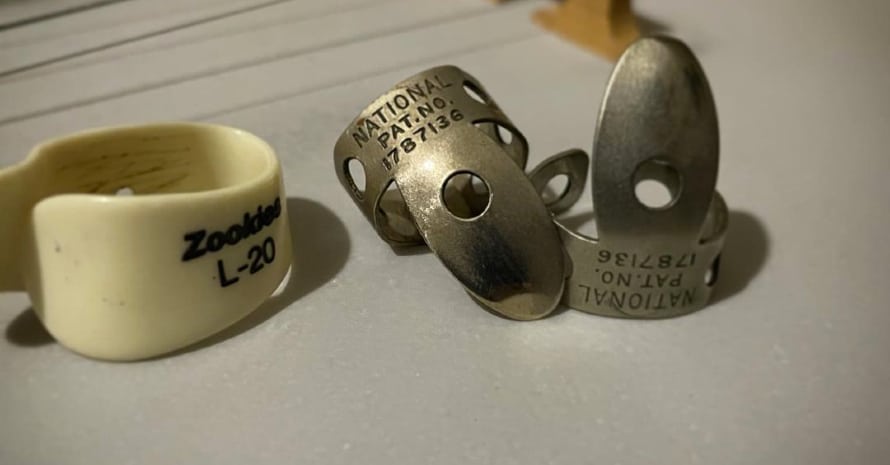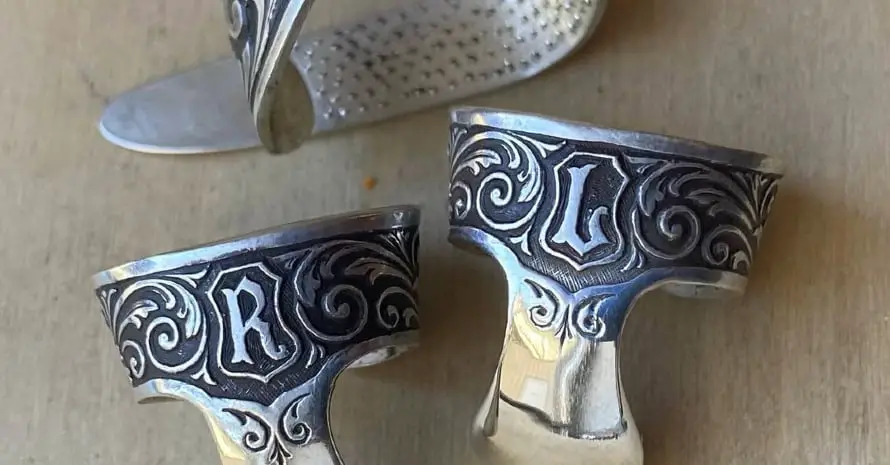There are a lot of techniques for playing the banjo, but the most common is using special fingerpicks. The first question a banjo beginner usually asks is how to wear banjo picks. And indeed, you need to choose the right one first. If music is a marriage, then your fingerpicks are like wedding rings – that is, not all ones fit. Now, let’s speak of using the picks right. And believe me, your intuition will probably fail you this time. Surprised? Mine did. But with the right guidance, you will avoid wasting your time and pick your right manner sooner.
The Guide
Here is the first surprise: players traditionally wear three fingerpicks on their fingers, not hold one, like you do with a guitar. Wearing them right is a part of the art. Here comes a little more on the proper use of thumb and finger picks for classical bluegrass style. However, let’s start with the basic concepts.
What Are Banjo Picks?
What’s the idea of the pick about? In fact, you use a harder item instead of your soft fingertips to develop a firmer, harder and louder manner of playing. A traditional bluegrass banjo playing technique involves three fingers with picks which are not identical. Why are they made this way, and what are they for?
Types and Materials of Banjo Picks
If we speak of the bluegrass style, it usually uses three picks: two for the fingers (index and middle), and one for the thumb. Why are they used like this? Because not all banjo strings are created equal, in terms of length and function. The fifth string of a traditional bluegrass five-string banjo is usually shorter than the others and starts at the fifth fret. It is tuned like the first one at the fifth fret, and it’s usually played with no frets as it’s designed to only play one note (the so-called drone note).
This defines the difference between using these strings. While you’re using the four long strings to play the melody, the drone string defines the rhythm as you strum it repeatedly (usually at eighths) with your thumb. In addition, the long strings are played louder, with the drone note setting the rhythm rather in the background. Due to these differences, you need two types of picks for these types of strings.

The Step-by-Step Guide on Choosing and Wearing the Pick
When you get to the banjo heaven (okay, to the nearest musical instruments store) and get surrounded by various picks, how do you choose yours?
1. What size are you on?
The right fingerpick should sit on your finger firmly and not too deep. The edge of the pick should be about 1/8 inch beyond the end of the finger.
2. Do the picks feel heavy?
They will never feel as if they’re not there, but neither should they feel like a burden.
3. Are they easily bent?
Bending fingerpicks is an important part of personalizing them and finding your own sound. But this is to be addressed separately.
4. Pick Your Pick
So, how do you choose your fingerpicks? The right one should feel light, sit easily on your fingers, and their weight should not prevent your fingers from moving freely. As for the sound, there is no one-fits-all instruction: your ear is the best judge. Among those that sit equally well, choose the ones that sound better to your ear.
5. Finger-Pickin’ Good!
And now something about how your intuition may work wrong. Many beginners first get it wrong and try to wear the picks so their claws sit right on the fingernails. It may seem natural, but if you try playing it like this, your finger picks will grab the string and pull it, instead of strumming. This will not only result in the wrong sound, but also in damage to the instrument.
On the contrary, if you wear the fingerpicks the right way, you’ll touch the strings with the outer surface of the claw. Thus, you won’t pull them when hitting. If there is no banjo around you, try a guitar. If you don’t have any of them, just get creative: hold an imaginary one and lay your fingers on its strings. Now everything becomes clearer.
6. How Deep Is Your Tip?
How deep should you wear the picks? The general answer about how to wear finger picks for banjo is to push them down until they sit firmly, and then look at the sticking part and bend it if necessary. Isn’t it too long? How does it interact with strings?
To bend a pick, you just need to put a pick on and press your finger against the table (as if you push an invisible button). The metal will bend and repeat the shape of your finger, which will result in smoother moves when playing. Yet you may be lucky enough to find bent ones that sit well right out of the box.

FAQ
There are always questions, because the practice of fingerpicking on banjo is very diverse. Still, I’ll try to address some of them.
How are banjo picks supposed to fit?
They should sit firmly on your fingers and your thumb. The tip should reach out a bit, usually about 1/8 inch (you can change this parameter a bit, but chances are you won’t have to).
Do I have to bend banjo finger picks?
Yes, it’s a common practice to bend picks. But, again, you may run into curved ones that don’t need additional bending.
What size banjo picks do I need?
It depends on the size of your fingers. Previously I mentioned a ring because there are no one-size-fits-all ones: they should fit your particular finger. So do banjo picks. Many manufacturers, though, solve this problem by selling sets of varying size. If you have a pair of TWS headphones, you may remember that they come with three or more pairs of ear tips. You choose yours and leave the rest to collect dust. Banjo pick manufacturers do the same.

The Coda
Of course, there are many unconditional ways of playing the banjo. But as for me, I’d recommend mastering the classical manner first and then experiment. Hope you will enjoy your banjo sessions even more with these tips. Of course, you can play it with your fingers or with a guitar pick, but mastering the traditional bluegrass style first will help you with these too, as you will learn the potential of the banjo and its unique abilities among its sibling instruments. If you have your own experience with fingerpicks to share, I’d like you to drop a few words in the comments.
Also Read:




